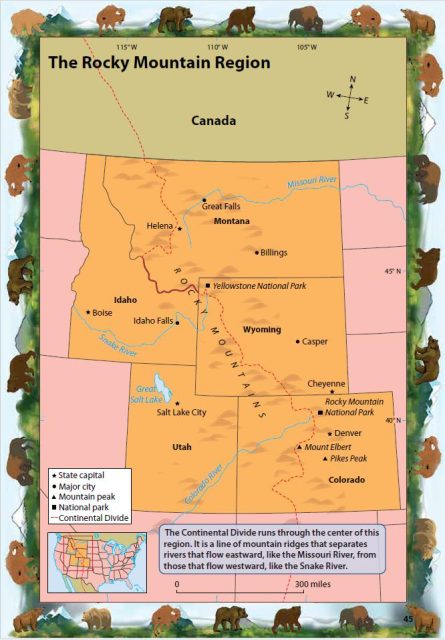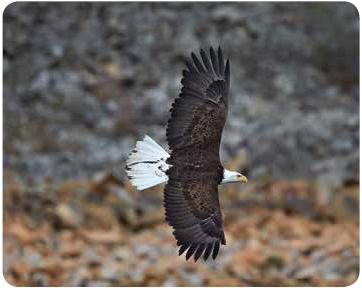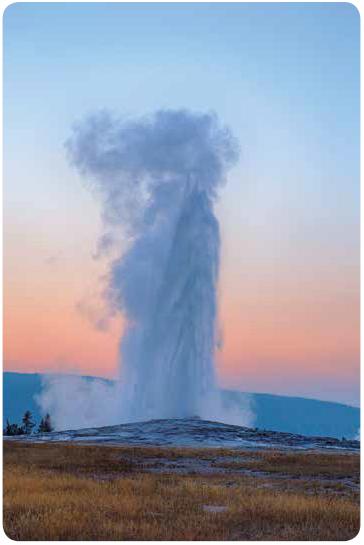The Rocky Mountain Region
Exploring the Rocky Mountain Region Flying west from the Great Plains, we were greeted by a dramatic sight—a huge wall of tall mountains, stretching from north to south. Our map told us that this was the great range called the Rocky Mountains. The Rockies, as they are called, run from Canada through all of the states in the region that bears their name. These five states are Colorado, Wyoming, Montana, Idaho, and Utah. The Rocky Mountains themselves continue into New Mexico, which is part of another region.
We noticed right away how different these mountains were from the ones in the Appalachians, the big mountain range in the eastern United States. Most mountains in the Appalachians have gentle slopes and rounded tops covered with trees. Mountains in the Rockies are more likely to have steep, craggy sides and jagged, rocky tops. Noticing that many of the mountains had snow on their peaks, we guessed that the Rockies were much taller than the Appalachians, too. It turns out we were right. The tallest mountain in the Appalachian range is only around six thousand feet high. The Rockies have dozens of peaks towering more than fourteen thousand feet.

After the flatness of the Great Plains, we were eager to explore this mountainous region. According to our map, Colorado had more and taller mountains than any other Rocky Mountain state. We headed there first. We landed our ship in a park in the city of Denver, which the map said was Colorado’s capital. We found out that it was a big, modern city, the largest in the whole Rocky Mountain region. It is called the Mile-High City because of its high elevation, or height above sea level.
As usual, we went to the public library to find facts about the region. I wondered what made people settle in the Rockies during the 1800s. After all, most of the land in the mountains was too steep to farm. I learned that the early settlers mostly came to mine valuable metals that were discovered in the mountains. Among the metals they mined were copper, lead, and the most valuable of all, gold and silver.

Today, people who live in the Rockies work in many kinds of businesses and industries. One of the most important industries is tourism. People come from all over the country to admire the beauty of the mountains and to visit the region’s famous national parks. People also come to ski.
Skiing is a sport practiced in many places in the Rockies. People go up to the snowy mountaintops. Then, they strap long boards on their feet and slide downhill over the snow. I know—it does seem kind of crazy!
A Day at Yellowstone
From Colorado we flew north to Wyoming. This is the least populated state in the entire United States. We flew over a lot of wild, empty country on our way to Yellowstone National Park. Yellowstone is the oldest national park in the world. In the day we spent wandering the park, we saw more amazing animals than we had in our whole time in the United States.

Lieutenant Koola showed us big birds called eagles soaring in the sky. She told us that because the bald eagle was considered to be proud and free, it was made the national symbol of the United States. Then Lieutenant Koola pointed out a herd of shaggy animals with horns and humped backs. “Remember the bison we read about when we studied the Great Plains?” she asked. “That is hat those animals are. They were almost killed off by hunters in the 1800s, but then the government decided to protect them in parks like this. Now there are thousands of bison in Yellowstone.”
In another field, Lieutenant Koola showed us some animals that looked like deer but were much bigger. On their heads were gigantic antlers, or horns, that branched out into many sharp points. Lieutenant Koola said that they were elk. Lieutenant Koola also told us about grizzly bears. “Grizzlies,” she said, “usually stay hidden in the woods, but if they smell food, they come looking for it. People who camp overnight in Yellowstone hang their food from high tree branches so it will not attract the bears.”

Later, Lieutenant Koola took us to a place where a sign said “Old Faithful.” We wondered what Old Faithful was — another kind of animal, perhaps? But there were no animals around. Lieutenant Koola said, “Just wait.”
Suddenly a huge jet of steaming water came bursting out of the ground and shot at least a hundred feet into the air! Lieutenant Koola said, “That’s Old Faithful. It is the world’s most famous geyser.
We asked her what made the hot water shoot out of the ground like that. She explained that deep inside the earth, there is a layer of hot liquid rock called magma. In a few places on Earth, like Yellowstone, the magma is especially close to the surface, and it heats the rocks just under the ground. When water from the ground seeps into the hot rocks, it boils and starts to turn into steam. Pressure builds up, and the water and steam burst out of the ground together. She made it sound as if we were standing on top of a giant teakettle.
After leaving Wyoming, we flew north to Montana, another state with magnificent scenery and very few people. In the northwestern part of the state, we saw mountains and valleys that had been carved out of the landscape tens of thousands of years ago by glaciers—huge, slow-moving rivers of ice. Then, we turned southwest and flew over the mountains of Idaho. I asked a crewmember, “Do you know what Idaho is most famous for?” He replied, “I do not know—mountains, maybe?” I said, “No—potatoes!” I explained that Idaho grows more potatoes than any other state.
We flew farther south, to the last of the Rocky Mountain states, Utah. I had read that Salt Lake City was the capital of the state. It is also where the headquarters of the Mormon Church is. Utah is only a partly mountainous state. West of Salt Lake City where the mountains end, there is a different kind of landscape. But I think I will wait until my next message to share it with you. We are now heading to the Southwest.